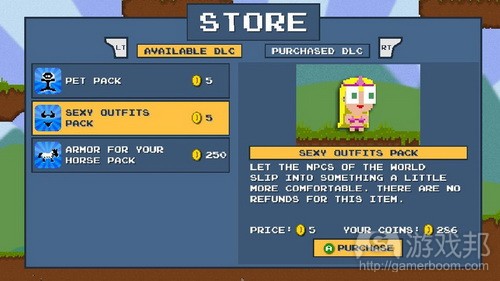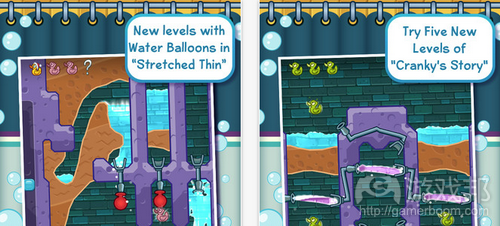论述设计游戏付费内容的几点原则
作者:Tyler York
我们曾在IndieGamer和TIGSource讨论会上询问独立开发者如何平衡玩法和创收。我们从中得到的答案令人有些不知所措,致使我们开始探究开发者眼中的合理创收方式。
虽然观点不一,但开发者们的一致看法是,要确保自己能够赚钱谋生。现代社交和手机游戏(游戏邦注:尤其是免费增值游戏)创收方式所带来的问题和机会是,创收内容需融入游戏之中。对游戏设计师来说,这意味着,他们的决策不仅得考虑用户体验,还得顾及游戏的创收。和预先支付50美元不同,你的游戏盈利手段通常与收益直接挂钩。
通常,这意味着游戏设计师需要权衡玩法和创收。所以你如何在未损及游戏创造性的前提下高效基于游戏获得收益?关于此问题,大家的意见都很鲜明,但主要反映同个原则:
内容是关键
在制作游戏时,促使游戏富有价值的主要元素是内容。若你制作的是款免费增值模式游戏,游戏应该包含充足免费内容,致使游戏富有下载价值。要求用户付费购买新内容完全合情合理。
保持诚信
某回应者表示,“支付渠道要呈现允诺的体验内容。”简而言之,若你要求用户购买某内容,但其未呈现允诺的内容,他们便不会再给你第二次的机会。
出售经验,而非升级内容
你可以付费解锁Knights或Clerics,但付费获得“带来更多破坏性的Knights”或“带来更多治愈能量的Clerics”就不是什么好主意。这不仅会破坏多人游戏的平衡性,也会让你在平衡单人游戏时遇到更多的阻碍。
保持独特性
有关制作付费新内容方面,你出售的应是有趣的内容,而非基于旧元素而改造的新内容。不妨参考《Where’s My Water》中的各新关卡如何呈现新玩法挑战和空间。
限制刷任务操作内容
游戏不应让付费变成避开糟糕、乏味内容的唯一渠道。关于此方面,Roger Dickey提出一个管理刷任务操作内容的方式——Grind vs. Spam vs. Pay:要获得特殊道具,玩家可以选择刷任务,或者向好友发出请求,抑或者是进行付费。这让付费玩家得到更多获得新道具的选择机会。若玩家半途中厌倦了刷任务式的重复操作,可以让他们打折购得道具。
避免融入令人生厌的广告
就像《模拟城市》中的廉价工业园,粗糙烂制的广告策略既是创收的最简单方式,也是破坏游戏空间的最快方式。这包括损害沉浸感的满页广告,游戏页面中的分散旗帜广告,甚至是游戏付费内容的促销广告。相反,我们应将广告控制在不涉及游戏玩法的页面中(游戏邦注:例如库存页面),只融入能够自然中断游戏内容的全页广告,例如《Hero Academy》的回合间隙。
黄金法则:换位思考
以玩家的视角换位思考,问问自己,什么属于合理的内容?若你有自己制作游戏,你多半也会进行体验。在体验过程中,记录令你感到沮丧的创收节点,以及合理付费内容。
这里令人挣扎的地方是,所有人都想要创收,但在关于玩法要在多大程度上让步于创收内容方面,大家的看法各不相同。决定创收内容对很多开发者而言是件棘手的事情,上述几点原则能够帮开发者既保留玩法,又从中获得营收。(本文为游戏邦/gamerboom.com编译,拒绝任何不保留版权的转载,如需转载请联系:游戏邦)
The Principles of Game Monetization
by Tyler York
As a part of Betable’s community outreach, we decided to ask indie developers on the IndieGamer and TIGSource forums to weigh in on how they balance gameplay with monetization. The response was overwhelming, and lead to some interesting insights into what game developers find to be appropriate versus abusive monetization.
While opinions differed, I think we can agree that all game developers want to put food on their tables. The problem and opportunity raised by monetization in modern social and mobile games, especially freemium games, is that making money must be integrated into the game itself. For game designers, this means that their decisions will impact not only the user experience, but also how much money the game makes. Instead of getting paid $50 upfront for a game, your game’s monetization hooks translate directly into revenue.
Often times, this means game designers have to make trade-offs between gameplay and monetization. So how do you monetize your game effectively without tarnishing your game’s creative vision? When it came to discussing this question, opinions were strong but largely reflected the same principles:
Content is key
If you’re creating a game, the majority of what makes that game worthwhile is content. If you are making a freemium game, there should be enough free content to make the game worth downloading. Asking users to pay for new content is perfectly acceptable.
Be honest
One respondent wisely stated that “each payment should purchase a system that was designed with the best intentions to provide the experience promised.” Simply put, if you make your customers pay for something and it doesn’t deliver what you promised, they won’t give you a second chance.
Sell experiences, not upgrades
You can charge to unlock Knights or Clerics, but it’s a terrible idea to charge for “Knights that do more damage” or “Clerics that can heal more”. Not only does this break gameplay balance in multiplayer games, but it will give you major headaches when balancing single-player games too.
Make it unique
When creating new content to be sold, you should be selling something interesting rather than a rehash of something old. Notice how each group of new levels in Where’s My Water feature new gameplay challenges and environments.
Limit the treadmill
Your game shouldn’t make paying the only alternative to a miserable, boring grind. To this end, one method of managing grinding was highlighted by Roger Dickey on our blog. It’s called Grind vs. Spam vs. Pay: to obtain pieces of a special item, players can grind, ask their friends, or pay. This gives the players more options for obtaining an item, and they can buy the item at a discount if they get tired of grinding part-way through.
Avoid obnoxious ads
Like low-rent industrial zones in Sim City, quick and dirty advertising tactics are both the easiest way to make money and the quickest way you can pollute your game’s environment. This includes immersion-killing full-page ads, distracting banners in gameplay screens, and even promotion of in-game paid content. Instead, regulate ads to non-gameplay screens, like the inventory screen, and only include full-page ads if it fits with a natural disruption in gameplay, such as between turns in Hero Academy.
The Golden Rule: “Don’t be a dick”
Put on your player hat and ask yourself, what is reasonable? If you make these games, you probably play them too. When playing, make a note of when a monetization hook frustrates you and (more importantly) when it doesn’t.
The struggle here is that everyone wants to make money, but opinions differ greatly on how much you should have allow monetization to encroach on gameplay. While monetization will always be a bitter pill for some game developers to swallow, the above principles should help you make money from your game while preserving gameplay.(Source:gamasutra)











































 闽公网安备35020302001549号
闽公网安备35020302001549号